- Home
- Jason Webster
Violencia Page 11
Violencia Read online
Page 11
This is the time of the taifas, when Moorish Spain shattered into a multitude of city-states and kingdoms after the collapse of the Cordoba caliphate. Christian Spain was likewise divided, and the frontier between Muslim and Christian areas was blurred and porous. No central power existed; authority was won through sheer military might. It was a time of rivalries and fluid alliances, of warfare, plunder, and glorious opportunities for ambitious men. The Wild West of America is not a bad comparison to get a sense of the period.
In this environment, Rodrigo became the most respected and feared warrior of his age, fighting his way through danger and betrayal to be hailed Lord of Valencia in 1094. En route he became the closest ally and greatest foe of kings, fought for both Christians and Muslims, made himself enormously rich by robbing his enemies, and was turned into a legend. A Moorish contemporary writer, while condemning him, recognised him as ‘one of the miracles of God’. He was never once defeated in battle, and, according to legend, was even victorious over his enemies from beyond the grave: after his death in 1099, his widow, Jimena, managed to rally the troops one last time by putting armour on her husband’s corpse and propping him up on his horse to charge the enemy lines. El Cid is Spain’s Achilles, a mythical warrior gifted with near superhuman power.
So much for the story. The first thing to emphasise is El Cid’s prowess as a soldier. Fighting was the dominant activity of his age, and El Cid was very good at it, as his other nickname – El Campeador, ‘the hero of the battlefield’ – testifies. In hand-to-hand combat he was once said to have taken on fifteen knights simultaneously, killing one, wounding another and sending the others off in flight. And he was also an excellent commander, understanding the need for meticulous planning and highly trained soldiers. In addition, he was lucky, and by never suffering a defeat, even in engagements in which he was seriously outnumbered, he gained a reputation for invincibility.
All of which are noble and much-needed qualities for an old-school hero. But dig a little deeper and El Cid often appears to have been anything but noble. To begin with, who was he fighting for? The simple answer appears to be: for himself. Over his lifetime he served several masters, most controversially Muslim as well as Christian kings. The Poema del mio Cid, the poem written about him roughly a hundred years after his death, makes no mention of this. But El Cid spent much of his life soldiering on behalf of the ruler of Zaragoza, Al-Mu’taman. Indeed, it appears to have been the Zaragozan who gave him the name by which he is known to this day: ‘El Cid’ comes from the Arabic Al-Sayyid which means ‘lord’, a rough equivalent of the title ‘sir’.
It is interesting at this point to contrast El Cid with Santiago Matamoros. Both are emblematic Spanish heroes, both are warriors, both have the power to turn battles against the odds; and yet while Matamoros knows very much which side he’s on in the Moor–Christian divide, El Cid is a much fuzzier character, his very nickname derived from Arabic.
Morally, El Cid is equally hard to define. Under him, Valencia had both Moors and Christians working in the city administration. Yet his treatment of a Moorish judge who had helped overthrow the previous ruler suggests a far less tolerant man: after confiscating his property and having him tortured, El Cid had the man dragged out, buried in a pit up to his waist, and burnt alive. His wives and children were only spared the same fate after an outcry from the public. According to a Muslim source, the persecution didn’t end there, and he subjected the Muslim population to an ‘inquisition’:
He seized them and extracted fines from them until he had rooted out everything they possessed . . . Many of them died during this treatment.
Compare this with how Christian sources reported a speech he made to the Muslims of Valencia after conquering the city:
‘I wish to hear about all your affairs, and to become a sort of companion to you, behaving to you as friend to friend, or relative to relative.’ . . . After he had said all this to them, he ordered them to go about their business. The Moors left well content with the Cid, marvelling at the promises he had made to them and at the kindness he had shown them.
Given the times, the treatment of the Moorish judge was not, perhaps, extraordinarily cruel. But another anecdote quoted in more than one source gives a further sense of El Cid’s moral ambiguity. Needing cash, El Cid went to a pair of Jewish moneylenders, presenting them with treasure chests as security for the loan they would give him. Bizarrely, but perhaps thinking they could trust El Cid, the moneylenders agreed not to look inside the chests for a year. When they did so, they found they were filled not with jewels, but with sand . . . When they appealed to El Cid for justice, they were brushed aside. Perhaps not surprisingly, according to Moorish sources, El Cid’s favourite stories were those of the famous liar of Arabian tales, Al-Muhallab of Basra.
Warlike, mercenary, heroic, tolerant, cruel, rapacious, morally ambiguous, noble . . . and a rogue. Were it not for the more romantic portrayals of him in poems and on film, El Cid might almost be a character from the Picaresque style of literature which flourished in Spain in the sixteenth and seventeenth centuries, in which craftiness, guile and the ability to slip through the illogical ups and downs of fortune are celebrated.
In this, he is quintessentially Spanish, combining military skill and prowess with stubbornness and wiliness that enable him not only to survive, but also to become a proud and magnificent hero, a man whose name continues to resonate to this day.
1 The master horsemen of Moorish Spain belonged to the Zanata tribe, who in turn gave the Spanish language its word for horseman, jinete. This Spanish culture travelled across the Atlantic in the wake of Columbus’s discovery, and formed the basis of the traditions of the Mexican and Californian cowboys, known as ‘buckaroos’ from the Spanish vaquero meaning ‘cowboy’.
2 Other etymologies point to the word trovar, from which comes the French trouver, ‘to find’; this draws an interesting parallel with the English word for street musician, ‘busker’ – a kind of modern troubadour – which comes from the Spanish buscar, ‘to seek’.
PILGRIMAGE AND MOOR-SLAYING
The Middle Ages sees both the high point of the pilgrimage to Santiago, and the final development of Spain’s patron saint as a ‘Moor-Slayer’. That these happen during the most intense years of the ‘Reconquest’ is not accidental.
Pilgrims began travelling to Compostela to venerate the supposed remains of St James shortly after they were discovered in the early ninth century. But it wasn’t until the eleventh century that large numbers began to arrive from all over Europe. The city had been sacked by the Moorish dictator Al-Mansur in 997 (and the cathedral bells stolen and taken back to Cordoba, where they were turned upside down and converted into flaming torches for the main mosque). But by 1003 a new cathedral was being built in the saint’s honour to accommodate the growing number of visitors. Political upheaval within Al-Andalus meant that raids from the south were becoming less common, making the pilgrimage a little safer.1 By the early twelfth century, Compostela’s position and strength were such that the now hundred-year-old cathedral was pulled down and a larger structure put up in its place. This is the one that stands to this day, consecrated in 1105.
The rising popularity of the route to Santiago led to the compilation of the first tourist guide in Western history – Book V of the Codex Calixtinus. Probably written by a French monk in the twelfth century, the Codex is a long work which describes the history of Santiago, miracles associated with the saint, and the liturgical texts used at Compostela, among other things. But Book V is designed to be a functioning travel guide for the average French pilgrim setting out for the holy Spanish city. Advice given includes which churches to visit along the way, which relics to venerate, and details about the various stages of the route. But it also gives practical advice, such as how to avoid the ‘huge flies’ which infest certain areas, or the best way to deal with untrustworthy boatmen when trying to cross a river: ‘Whatever you do, don’t get into an overloaded boat, which can capsize
.’
Descriptions of the various peoples living along the Camino are colourful, to say the least.
Here’s what the author of the Codex has to say about the Navarrese:
These are an undeveloped people, with different customs and characteristics to other races. They’re malicious, dark, hostile-looking types, crooked, perverse, treacherous, corrupt and untrustworthy, obsessed with sex and booze, very violent, wild, savage, condemned and rejected, sour, horrible, and squabbling. They are badness and nastiness personified, utterly lacking in any good qualities. They’re as bad as the Getes and the Saracens, and they despise us French. If they could, a Basque or Navarrese would kill a Frenchman for a mere cent.
In some places, like Vizcaya and Alava, when they get warmed up, the men and women show their private parts to each other. The Navarrese also have sex with their farm animals. And it’s said that they put a lock on the backsides of their mules and horses so that nobody except themselves can have at them. Moreover, they kiss lasciviously the vaginas of women and of mules.
Given that Navarre was the main gateway into the Peninsula for most pilgrims, you wonder how any of them made it to Compostela at all . . . But such was the importance of the Santiago pilgrimage that by the thirteenth century Dante was insisting that ‘in the narrow sense, none is called a pilgrim save he who is journeying towards the sanctuary of St James at Compostela’. Within the spiritual hierarchy, the route to Santiago was more sacred than a voyage to Rome or even to Jerusalem.
The main promoters of the Camino were the Cluniacs, keen to bring their reforming zeal over the Pyrenees into the Christian areas of Spain. The Spanish Church had been using a different liturgy until this point, known as the Mozarabic Rite. But the Cluniacs introduced the Latin Rite, which was formally adopted by El Cid’s contemporary King Alfonso VI, who did most to welcome the Cluniacs, and offered them the highest positions in the Spanish Church.
Religious fervour wasn’t the only draw for the French reformers: many of the Moorish taifa kingdoms were paying tribute – a polite term for ‘protection money’ – to Spanish Christian kings, who then passed large quantities of this wealth to the Cluniacs. In fact, it is said that without the Moorish gold reaching their coffers, the great Abbey at Cluny itself could never have been built. The same source of treasure also helped build the Cluniacs’ Spanish headquarters at Sahagún, near León, once a cosmopolitan metropolis and the most powerful religious centre in Christian Spain, but today a dusty and rather pathetic one-horse town with only a few scraps of ruins to remind locals of their glorious past. Religion and wealth, as ever, were making cosy bedfellows.
And to this was added a third element: military force. The end of the eleventh century sees the development of the pan-European Crusader movement and the marriage of faith with organised violence, out of which come the knightly orders and the conquest of the Holy Land. But this strange partnership between a fighting culture and a religion predicated on ‘love’ had been developing for some time before Pope Urban’s rallying speech at Clermont in 1095. In fact Urban himself had used similar rhetoric to urge Christians to capture the Spanish city Tarragona from the Moors in 1089. And over twenty years before, Pope Alexander II had helped rally an international Christian force to capture the Aragonese fortress town of Barbastro in 1064, a campaign which a leading twentieth-century Spanish historian has described as ‘a crusade before the Crusades’. As the Catholic world began to reinvigorate itself and test its strength, the obvious battle front was the Peninsula, the Saracen enemy never more than a few miles away. The Norman conquest of Muslim Sicily in 1091 and the European invasion of the Levant should be seen in this context, born out of the military testing ground that was Spain at the time.2
And the figure who symbolises this transformation is Santiago, no longer simply an Apostle of Jesus, but now a warrior astride a white steed, dressed in contemporary armour, sword raised high to lop off the heads of the dastardly Moors cowering on the ground beneath him. His shape-shift into man of violence began as early as the tenth century, but it is in the twelfth century that he emerges fully fledged as ‘Matamoros’. In 1150 an account was written of a battle which had taken place three hundred years previously at a small hill fortress in La Rioja known as Clavijo. Although earlier accounts of the battle existed, it was in this twelfth-century version that King Ramiro I was said to have been visited the night before the battle by a vision of Santiago himself, who urged the desperate monarch to fight on against the odds, promising him victory.
And so it turned out, for during the next day’s fighting:
. . . the holy Apostle of God appeared, as he had promised, raising the morale of our men and urging them into battle, striking and immobilising the Saracen hordes.
Not surprisingly, only a few years after these lines were written, in 1158 Spain’s own knightly order was established along the lines of the Templars and Hospitallers. Its name? The Order of Santiago.
From Apostle and Pilgrim, Spain’s patron saint had been transformed by the bellicose environment of his adopted homeland into a man of the sword, forever fighting unwanted versions of himself. He had, in a sense, been ‘Iberianised’.
Yet there is a twist in this tale. The symbol of the pilgrimage to Compostela, and of Santiago himself, is the scallop shell, often seen attached to the front of the saint’s hat, and nowadays tied to the top of a pilgrim’s staff. The French dish Coquilles Saint-Jacques is so called precisely because it is made with sea scallops, and scallop souvenirs can be bought by the bucketload from Compostela tourist shops. Theories abound as to why this particular shell should have been elevated to such a position. Do its various lines echo the many different routes to Santiago? Is it because Compostela is near the Atlantic coast, where scallops can easily be found? None really have the ring of truth about them. But here’s a funny coincidence: the symbol of the shell can not only be found at Christian Spain’s most important centre, but also inside the most sacred spot in Islamic Spain, the Great Mosque at Cordoba. If you visit the mosque, don’t look for the shell because it’s safely hidden from view. But if – as I have been – you are lucky enough one day to get right inside the Mihrab niche built by Abd al-Rahman II in the ninth century, look upwards. There you will find a magnificent ceiling in the shape of a scallop, made from a single piece of stone. The Mihrab is the holiest site within a mosque, so to place that there in the most important mosque in the whole of Al-Andalus was certainly significant. And the Moors did so in the ninth century, when the remains of Santiago (or Priscillian . . .) had only recently been discovered in distant Galicia. Indeed, the shell as a decorative form in religious architecture can be found throughout Al-Andalus, and is also an important feature in the synagogue of Santa María la Blanca in Toledo, the most important Jewish building in the Peninsula during the Middle Ages.
So who was copying whom? Perhaps no one was. Perhaps the shell has a religious significance deeper than more superficial definitions of ‘us’ and ‘them’. Perhaps it represents a common ground between all religions. For cannot a shell also produce a pearl? It may be no accident or coincidence, then, that the most important temples of the three great religions in Spain – whose adherents were for centuries at each other’s throats and yet at times could live in harmony – all have the symbol of a scallop shell at their heart.
1 It’s worth pointing out that the Moors were not the only people threatening Compostela: Norman Vikings had sacked the city in 968 as well. Meanwhile, pilgrims had to face all manner of dangers, from bandits on the open road to predatory animals, and unscrupulous and sometimes inhospitable locals along the route.
2 In similar fashion, new military techniques, such as Blitzkrieg, were tested in Spain during the Civil War before being applied during the Second World War.
PEOPLES OF THE VEIL
The development of Santiago into nation-building man of violence was not happening within a vacuum. In a curious echo, a similar marriage between faith and military might was developi
ng in Moorish Spain at the same time.
The taifa kingdoms managed to survive for some fifty years. The high culture of the Cordoba caliphate continued among them in scattered form, but their lack of unity and frequent wars among themselves made them an easy target for northerners. At the beginning this was expressed in the payment of protection money by the Moors to the Christians to keep them at bay. But the flow of gold simply made the rulers of countries like Castile and Aragon stronger, more confident, and greedy for more. In 1085 the decisive moment came, when Castile’s Alfonso VI captured Toledo, the ancient Visigothic capital.
For centuries Christian Spaniards had felt inferior towards their Muslim compatriots. Militarily and culturally, the Moors were far advanced – a fact which, grudgingly, the northerners accepted. The capture of Toledo, however, was a turning point, and a huge fillip for the Christians: for the first time they had taken an important city from the Moors, and a doorway into the advanced culture of Islam had been opened. Suddenly Christians didn’t feel so inferior any more.
On the Moorish side, meanwhile, the fall of Toledo was a disaster. Militarily, the Christians were clearly becoming a more dangerous enemy. But unable to unite to defend themselves, and more enamoured of artistic than warrior culture, the taifa kingdoms understood that their very existence was at stake. Drastic measures were needed if the Christian momentum was to be halted.
The solution was obvious, but fraught with its own difficulties. Over the Strait, in Morocco, a new power had emerged: Berber tribesmen from the far southern deserts had taken over the country. Preaching a message of asceticism and religious purity, they had imposed a harsh, intolerant regime, with strict – if not always properly understood – interpretations of Islamic law. Holy warfare – jihad – was celebrated; the Berbers organised themselves around monasteries where faith and fighting skills were combined. Known as murabits, these institutions gave the warrior monks their name – Al-Murabitun, Latinised into ‘Almoravids’.

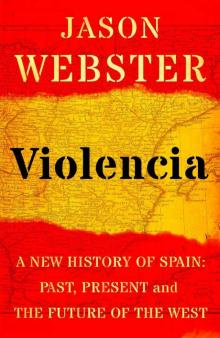 Violencia
Violencia Or the Bull Kills You
Or the Bull Kills You The Killing of El Niño Jesús
The Killing of El Niño Jesús The Spy with 29 Names
The Spy with 29 Names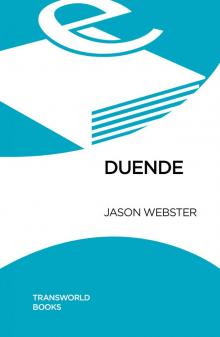 Duende
Duende Guerra
Guerra Sacred Sierra
Sacred Sierra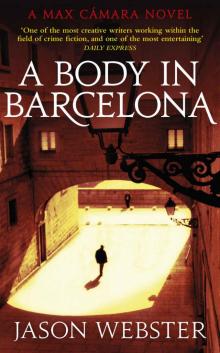 A Body in Barcelona: Max Cámara 5
A Body in Barcelona: Max Cámara 5 Fatal Sunset
Fatal Sunset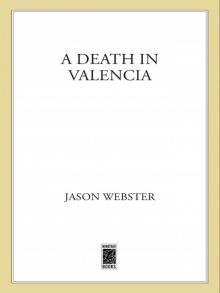 A Death in Valencia
A Death in Valencia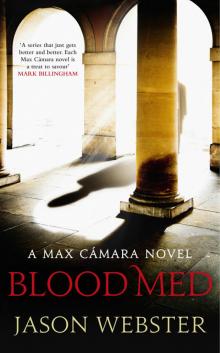 Blood Med
Blood Med Andalus
Andalus